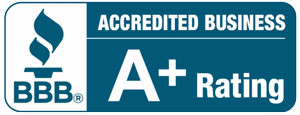Digital Handshakes: Making Business Connections That Actually Work
Building professional relationships online isn’t just a skill—it’s an evolving craft. With business boundaries melting across industries and time zones, digital networking and collaboration have become not just useful but necessary. Yet even in a hyper-connected age, many professionals still rely on outdated tactics that feel more transactional than transformational. Making meaningful business connections in a virtual world requires intentional strategy, respect for nuance, and a fresh understanding of how people actually want to work together.
Presence Is a Prerequisite, Not a Bonus
No one builds relationships in a vacuum. Your digital footprint—your LinkedIn profile, your professional bio, even the tone of your emails—is often the first handshake. If your online presence is outdated or one-dimensional, potential collaborators may skip the introduction altogether. What sets successful networkers apart is that they curate their digital selves with care, but not performatively. It’s not about flaunting credentials or perfect aesthetics—it’s about being current, coherent, and credible in ways that are easy to find and hard to forget.
Skip the Pitch, Start the Conversation
Nothing ends a potential connection faster than a cold message that reads like a copy-paste sales script. Effective outreach doesn’t come from asking for something—it comes from offering something that matters. Insight, shared interest, thoughtful commentary on someone’s work—these are the openings that lead to actual dialogue. Digital collaboration starts with mutual relevance, and the best way to establish that is by engaging without expectation. People know when they’re being prospected. They’re far more responsive to being respected.
Make Documents Easy to Work With, Not Just Easy to Send
When teaming up with outside partners, your files shouldn’t feel like locked vaults. Sharing documents in a way that invites real input—not just passive review—builds momentum and trust. It helps to remove password protection from PDFs when appropriate, ensuring seamless access while still aligning with security best practices. Taking steps to decrypt files only when necessary can also ensure that collaborators can view and edit them without unnecessary friction—take a look at this and consider how that shift could change your next project.
Shared Tools Need Shared Intentions
There’s no shortage of platforms for working together: Slack, Notion, Miro, Google Docs, and the list grows weekly. But throwing a collaboration tool into the mix without shared expectations is like handing someone a tennis racket without agreeing on the game. Before launching into a project, partners need to align not just on deliverables but on rhythms: How often will updates happen? What’s the tone of communication? Are we building something together, or just parallel playing? Clear norms make digital tools productive rather than performative.
Trust Has to Be Designed In
In a virtual setting, trust doesn’t emerge the same way it might over coffee or a handshake. It needs to be structured into the workflow. Small things—like responding when you say you will, showing up prepared to Zooms, or sharing visibility into your progress—go a long way toward building confidence. And trust isn’t just about dependability. It’s about psychological safety. If your digital collaborator feels like one misstep will be punished, or if there’s no room for honest disagreement, the partnership will stay shallow and stiff.
Diversity of Input Breeds Better Output
One often-overlooked advantage of digital collaboration is the ease of cross-pollination. When reaching across industries, continents, or even just disciplines, the blend of different working styles and knowledge bases can unlock fresh thinking. But that only works when the environment welcomes varied voices. Setting up an agenda doesn’t mean setting up a hierarchy. The digital space should flatten egos, not inflate them. Make room for junior team members, adjacent thinkers, or even outliers. They’re the ones most likely to spark creative leaps.
Endings Matter Just as Much as Beginnings
Too many collaborations fade without closure, which is a missed opportunity to reinforce the relationship. A well-designed wrap-up, even if the project was brief, signals care and professionalism. Thank-you notes, honest feedback, lessons learned—these aren’t just nice touches. They’re essential in maintaining trust and opening the door for future work. When people feel seen and appreciated at the end, they’re far more likely to return or refer others. In digital business, how things end often determines whether anything starts again.
At its best, digital networking isn’t about growing a contact list. It’s about building a community of shared interest, mutual respect, and aligned ambition. The people who thrive in this space are the ones who treat every interaction—every DM, every shared doc, every awkward Zoom intro—as a chance to learn and to connect. They don’t treat collaboration like a project to manage but like a culture to live in. And while the tools may change, that mindset makes all the difference.
Discover how the Wellington Area Chamber of Commerce can elevate your business with exclusive events and networking opportunities—visit their site today!




